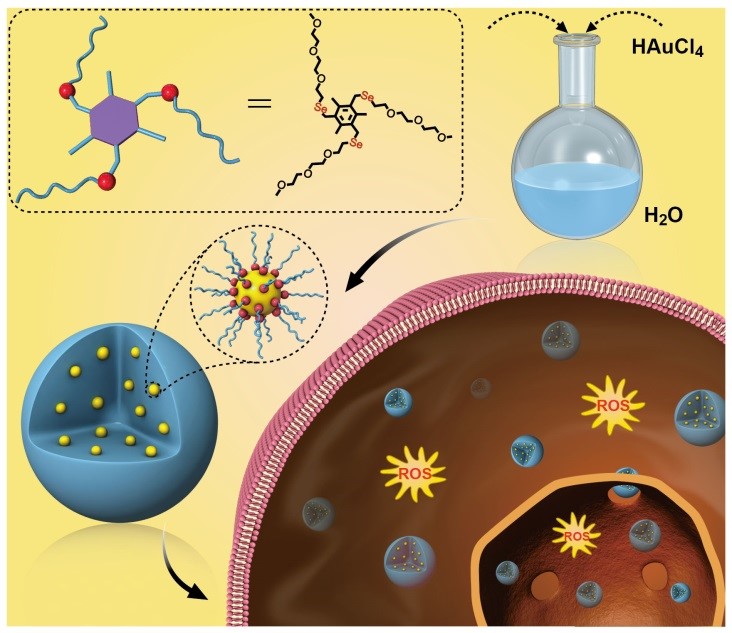Tianyu Li, Feng Li, Wentian Xiang, Yu Yi, Yuyan Chen, Liang Cheng, Zhuang Liu and Huaping Xu
ACS Appl. Mater. Interfaces, 2016, 8, 22106–22112.
Selenium has attracted increasing interest in the past decades because of the function of regulating the redox balance in human body. However, biomedical studies of selenium are still limited. Gold nanoparticles (AuNPs), typically prepared by a first reduction step followed by a second stabilization step, are widely applied in biomedical studies. But their own anti-cancer activity is less studied. Here, we report 2-nm AuNPs with significant anti-cancer activity (IC50 = 20 μM) that stabilized by a selenium-containing amphiphile EGSe-tMe. The AuNPs were prepared by simply mixing chloroauric acid (HAuCl4) with EGSe-tMe, which acts as both a reducing agent and stabilizer. In contrast to AuNPs prepared by EGSe-tMe, EGSe-tMe alone and typically prepared AuNPs show little anti-cancer activity even at concentrations up to 250 μM. Mechanistic studies suggest that selenium in cooperation with AuNPs can induce high concentrations of reactive oxygen species (ROS) in cancer cells, leading to cellular apoptosis.

